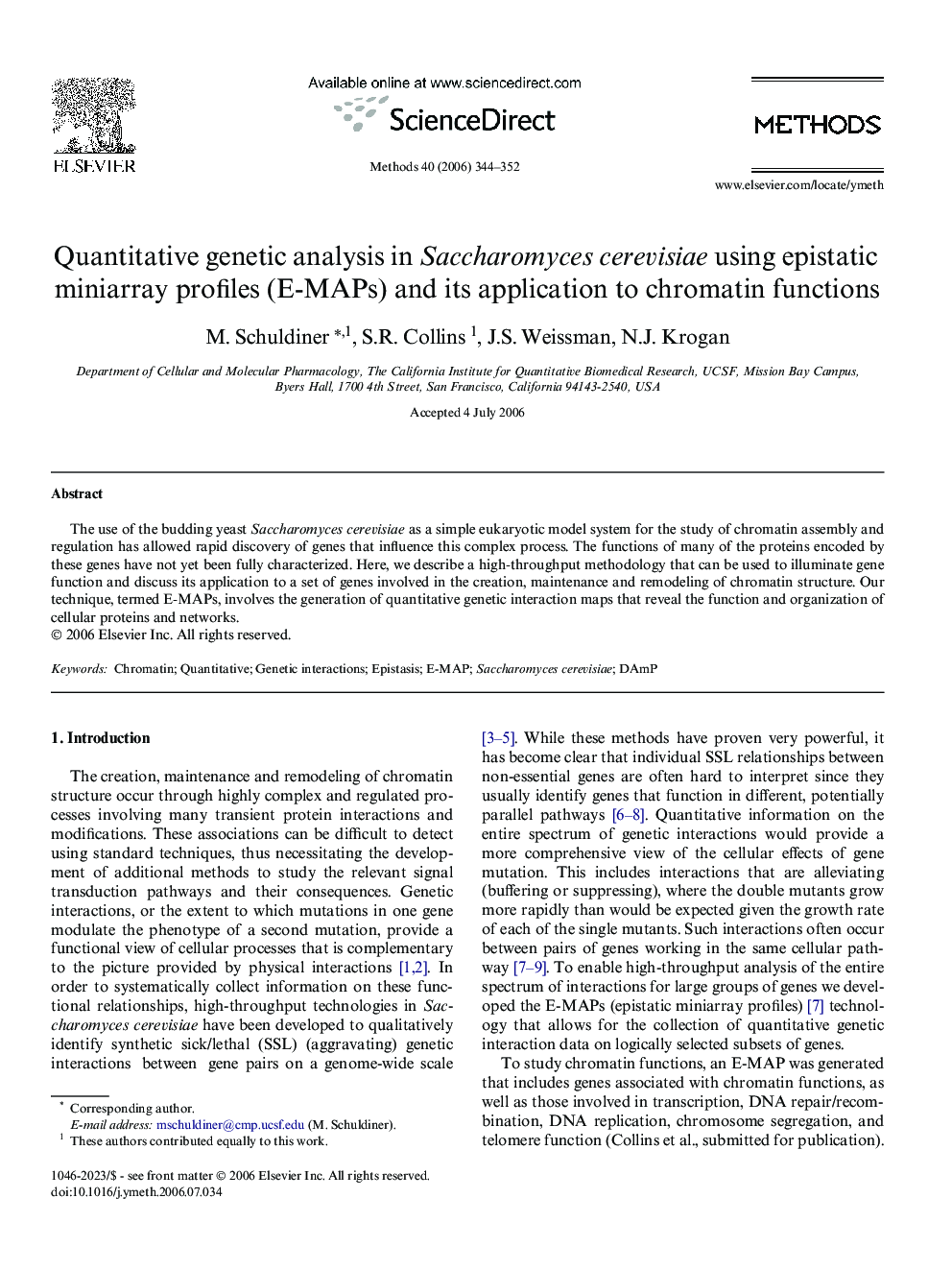| Article ID | Journal | Published Year | Pages | File Type |
|---|---|---|---|---|
| 1994452 | Methods | 2006 | 9 Pages |
Abstract
The use of the budding yeast Saccharomyces cerevisiae as a simple eukaryotic model system for the study of chromatin assembly and regulation has allowed rapid discovery of genes that influence this complex process. The functions of many of the proteins encoded by these genes have not yet been fully characterized. Here, we describe a high-throughput methodology that can be used to illuminate gene function and discuss its application to a set of genes involved in the creation, maintenance and remodeling of chromatin structure. Our technique, termed E-MAPs, involves the generation of quantitative genetic interaction maps that reveal the function and organization of cellular proteins and networks.
Related Topics
Life Sciences
Biochemistry, Genetics and Molecular Biology
Biochemistry
Authors
M. Schuldiner, S.R. Collins, J.S. Weissman, N.J. Krogan,
